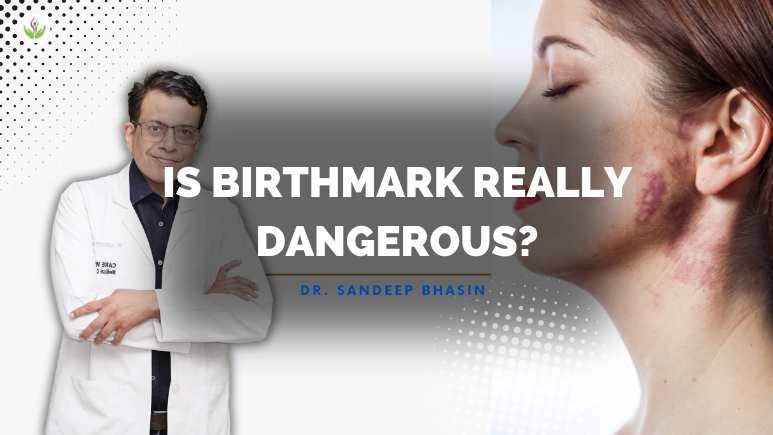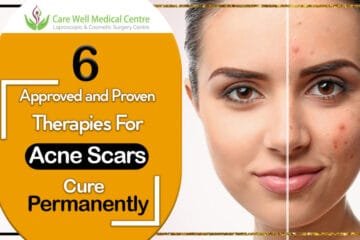Birthmarks are common changes in the skin’s color or blood vessels that happen to newborns and babies. Some people think of birthmarks as just cosmetic flaws, while others may worry about how they might affect their health. Here, we answer the question, “Is a birthmark really dangerous?”
Introduction to Birthmarks
An actual birthmark is a colored spot on the skin that is there at birth or shows up soon after. All over the body, these marks come in different sizes, shapes, and colors. Although most birthmarks are safe and don’t need to be treated, some may be bothersome because of how they look or where they are located.
Types of Birthmarks
Vascular Birthmarks
Abnormal blood vessels in or under the skin are what cause vascular birthmarks. They may appear red, pink, or purple and can be flat or raised. Examples include hemangiomas and port-wine stains.
Pigmented Birthmarks
Clusters of pigmented cells are what cause birthmarks. They can range from tan to brown to black and may be flat or raised. Examples include moles, café-au-lait spots, and Mongolian spots.
Understanding the Causes
The exact cause of birthmarks is not always known. Some may be due to genetic factors or abnormal blood vessel development during fetal development. Others may result from environmental factors or random genetic mutations.
Are Birthmarks Dangerous?
Most of the time, birthmarks are safe and don’t pose any health risks. However, some types of birthmarks may be signs of deeper health problems or be linked to complications. For instance, big or deep hemangiomas can change the way an organ works or make it look bad. Port-wine spots on the face could be a sign of problems with the eyes or brain.
Learn effective methods to get rid of birthmarks and achieve clearer skin today!
When to Seek Medical Advice
It is advisable to consult a healthcare professional if a birthmark:
- Causes pain or discomfort
- Grows rapidly
- Bleeds or ulcers
- Shows signs of infection
- Is located near the eyes, nose, or mouth
Treatment Options for Birthmarks
Treatment for birthmarks depends on the type, size, location, and associated symptoms. Options may include:
- Observation: Many birthmarks fade or disappear on their own over time.
- Laser therapy: Used to lighten or remove certain types of birthmarks.
- Surgery: Invasive procedures may be necessary for large or problematic birthmarks.
- Medications: Some medications may help shrink or manage certain types of birthmarks.
Natural Remedies for Birthmarks
Natural treatments might not get rid of birthmarks completely, but some people get better or feel less pain when they:
- Vitamin E oil
- Aloe vera gel
- Lemon juice
- Apple cider vinegar
Preventive Measures
Because the exact reason for birthmarks isn’t always known, it can be hard to keep them from happening. But some general things can be done to lower the chance of getting some types of birthmarks. For example, staying out of the sun too much and living a healthy lifestyle while pregnant are two examples.
Conclusion
In conclusion, birthmarks are common skin anomalies that vary in appearance and cause. People don’t need to treat most birthmarks, but some may worry you because of how they look or because they may be linked to health problems. If you are worried about birthmarks, you should see a doctor right away so they can figure out what is wrong and treat it properly.
FAQs about Birthmarks
The exact cause of birthmarks varies depending on the type. Some may be due to genetic factors, while others may result from abnormal blood vessel development or pigment cell clustering.
While many birthmarks are present at birth, some may appear shortly thereafter during infancy.
Yes, certain types of birthmarks can be removed or treated with laser therapy, surgery, or medications.
Some birthmarks may have a genetic component, but not all are hereditary.
Some birthmarks may fade or change in appearance over time, while others may remain unchanged.
In most cases, birthmarks are harmless. However, some types may indicate underlying health issues or be associated with complications
A doctor should examine a scar if it hurts, grows quickly, bleeds, appears to have an infection, or is close to sensitive areas like the eyes, nose, or mouth.














